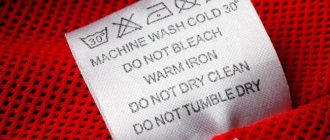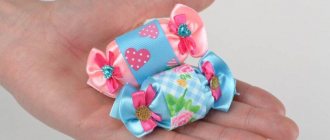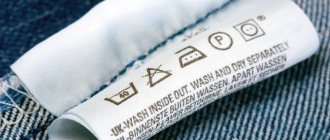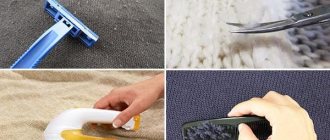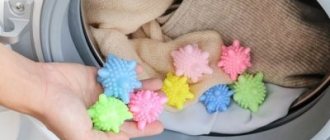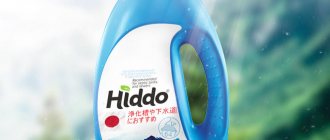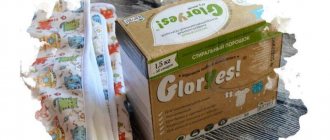We are meticulous about our favorite things. Openwork items, clothes made of delicate fabric or with decorative elements: just 10 years ago, hand washing was commonplace for such items. New technologies have left this process far behind. The delicate wash mode in the washing machine will help keep things in their original condition. This mode is present in almost all models that are on sale today and is indicated by a special icon on the panel.
What are they for?
When purchasing outfits, most people do not look at the manufacturer's care recommendations. But in vain. For example, how are you going to clean a coat that only requires dry cleaning if you live in a small village where there are no such establishments? If you don't follow the rules, the item will quickly lose its attractiveness.
For good appearance and long service life, textiles must be washed with a suitable washing powder.
The symbols that are applied to the label are universal and are adopted in many countries at the legislative level. Therefore, they are mandatory in textile factories.
The label itself is a piece of fabric sewn to the product in an inconspicuous place on the reverse side. In addition to information on how to wash, it most often provides information about the manufacturer and composition of the fabric.
Many people cut off these tips because the tag can be uncomfortable to wear. In this case, it is better to save the label and return to the care instructions as needed.
To avoid turning your home into a warehouse of cut-off labels and to avoid getting confused about which item belongs to which, use this simple advice. Before cutting off the tag, take a photo of it together with the item, and it will be clear which dress or sweater it is sewn on. And when you need information, just find the photo you need in the memory of your phone or camera.
In the following sections we will get acquainted with the symbols that appear on the tags.
Requirements for washing powder
A properly selected detergent must meet the following requirements:
- The powder should be easily soluble in water.
- It is necessary to exclude the situation when, after the end of the procedure, unwashed grains of powder remain among the fibers of the fabric.
- The presence of aggressive components in the detergent is unacceptable: enzymes, chlorine or the like.
- As a result, the color of the laundry should not change.
- If the selected washing powder gives clothes an unpleasant odor, then it will not be suitable for items made of delicate fabrics.
- After completing the procedure, the washed laundry should not become rough or hard to the touch. It is necessary that it remains soft and tender.
Basin - washing
The washing parameters are regulated mainly by the pictogram, which shows a basin (1). Its presence indicates that the product is washable.
- The crossed out container (2) indicates that the item of clothing cannot be washed: it should only be dry cleaned.
- If you see a basin highlighted with a horizontal line from below, then know that such a thing must be handled carefully, accurately maintaining the temperature, not subjected to strong mechanical stress and wrung out at minimum speed. The double line (3) indicates that cleansing should be as gentle as possible: with plenty of water and a quick rinse.
- In the picture you can see the numerical designations 95, 60, 30 (4) - they show the intensity of water heating allowed for this material.
- The points (from one to three) (5) are analogous to the previous value and are also responsible for adjusting the temperature - the more points, the hotter the water can be used.
- A hand lowered into the basin (6) means that the outfit can only be washed by hand.
- A twisted tourniquet (7) indicates that it is contraindicated to twist or wring out the item.
Italian program names
Original equipment from the brands Indesit, Ardo, Ariston can surprise you with Italian font:
- Marchia/Arresto - on/off;
- Ammollo - soaking;
- Asciugatura - drying;
- Base - basic;
- Centrifuga - spin;
- Esclusione - cancellation;
- Facile stiratura (Stira meno) - light ironing;
- Forte lavaggio - intense;
- Giri - number of revolutions;
- Lavaggio a mano - manual;
- Delicato - delicate;
- Lavaggio rapido - fast, express;
- Pre-lavaggio - preliminary;
- Risciacqui - rinsing;
- Ritardatore di partenza - delay, postponement;
- Speciale - special, special;
- Trattamenti - rinse with conditioner-rinse aid.
Square – spinning and drying
The most incomprehensible meanings for me are the various squares. They have many types, and therefore remembering them is not so easy. In general, the square (1) always means spin and dry mode.
- A crossed out square (2) usually complements the “Do not wash” sign and indicates that the product should not come into contact with water.
- If there is a horizontal line (3) in the center, then only horizontal drying is shown. When there are two stripes, this means that the product cannot be wrung out.
- One vertical line in the square (4) determines that the clothes can be placed on a rope or hanger. Two vertical lines indicate that the product should be dried without squeezing.
- You can find the same signs as the four described above, but in the left corner they have diagonal lines (5). All the rules are valid for them, as for standard images, however, in addition to this, you should not place such outfits in direct sunlight.
The next group of indicators is a square with a circle drawn inside it (6). This marking indicates that the item can be dried in a machine.
- One, two or three dots (7) can be depicted in the center of the circle. They regulate the permitted drying temperature, where three dots indicate the highest values allowed.
- Under the image that can be processed in a machine, you can see a horizontal line (8) - evidence that the procedure should be gentle. If there are two such stripes, then it is recommended to use only the delicate mode.
- If the symbol is crossed out (9), then the machine procedure is strictly prohibited.
They are not used now, but you can still find other signs on old clothes.
- A square with an arc running from one top corner to the other (10) - this outfit can be dried vertically.
- In the corner of the rectangle there are three diagonal lines (11). They say that the item needs to be protected from direct sunlight and dried in the shade.
- A square with three vertical lines (12) means that it is better not to spin the item.
Detergents used
Using a gentle cleaning program is not enough to preserve your items' original appearance. Detergents also play an important role. In this case, the use of liquid powders would be appropriate. They dissolve well at low temperatures and are easily washed out of fabrics, prevent the formation of pellets and preserve the structure of the fabric.
Depending on the color scheme of the items loaded into the drum, you can use both bleaching and universal detergents. It is important to try to avoid the phosphates and enzymes found in many powders. Detergents with lanolin effectively remove stains and dirt. This component has a soft effect on fabric fibers, maintaining rich colors.
Circle – dry cleaning
Circle (1) will tell you about the conditions of dry cleaning in specialized enterprises. There are pictures for regular “dry” cleaning.
- The crossed out circle (2) indicates that dry cleaning is prohibited.
- The letter A (3) indicates that treatment with any solvent is possible.
- The P icon in a circle (4) indicates that the procedure can be carried out with ethylene chloride, hydrocarbon, monofluorotrichloromethane.
- Underlined circle with the letter P (5) – the remedies from the previous version are valid, but the procedure itself is more gentle.
- Symbol F (6) allows the use of trifluorochloromethane and hydrocarbons.
- If the circle with F is underlined (7), then it is permissible to use the means described above, but in a delicate mode.
In addition to “dry” there is also “wet cleaning”. It has its own indicators, and the main one, which determines whether it is permissible to clean an object in this way, is a circle with the letter W (1):
- If the pictogram is crossed out (2), then water cleaning is impossible.
- When there is one horizontal line (3) under the symbol, you know that you need a delicate mode.
- A double underline (4) indicates the need for particularly careful procedure.
What are they needed for
Signs on clothes are a reliable guide for the housewife. Improper care gradually or immediately spoils the item, and even dry cleaning is not always able to help. To ensure that simple and delicate items last a long time and maintain their decent appearance, carefully read the manufacturer’s recommendations before purchasing and washing for the first time. What if your coat can’t be washed at all?
Triangle – whitening
A similar pictogram (1) will tell you whether this fabric can be bleached and what methods are acceptable.
- A crossed out triangle (2) indicates that bleaching is not permitted.
- A figure containing two parallel oblique lines (3) means that only oxygen-containing and non-chlorine bleaches can be used.
- If you see the letters CL (4) in the center of the triangle, this indicates that it is acceptable to add products containing chlorine.
Designations of icons on clothing
Labeling marks on clothing are usually applied in the form of a table, where each value indicates a recommended or unacceptable washing mode. The generally accepted decoding of markings on clothing labels is as follows:
- Basin – washing mode and recommended temperature;
- Iron – ironing;
- Circle – possibility of dry cleaning;
- Triangle – possibility of whitening;
- Square - drying.
These tags are usually located under the collar or on the side seams. To simplify product care, it is better not to cut off such labels. If the tag causes discomfort, it can be removed by first photographing and saving the information on it.
Iron - ironing
This sign is the easiest to recognize because its symbol is a diagrammatic iron (1).
- If the iron is crossed out (2), then ironing of the item is strictly prohibited.
- Inside the symbol you can see dots (3), which determine the temperature allowed for ironing the material. One point – delicate mode up to 110 degrees Celsius, two – up to 150, three – up to 200.
- When the appliance has two lines at the bottom, diverging in different directions (which indicates steam) and they are crossed out (4), the outfit cannot be steamed.
Nuances that are important to know
Surely, you are interested in the question - what washing conditions should be followed in order for the delicate mode to wash truly delicately, but effectively? There are few rules:
- separate colored items from light ones;
- for washing it is better to use a specialized liquid detergent and a small amount of softener;
- Pre-soak heavy stains with stain remover for delicate fabrics;
- refrain from pre-soaking;
- some things, such as linen, should be loaded into the washing machine only in special covers or bags;
- do not leave things in the machine after finishing washing;
- Some things that are prone to stretching are best not hung, but rather laid out to dry.
Letter marking
In addition to the icons, the label contains short warning and prohibition notices in English. I present the most common of them.
- Machine wash – machine washable.
- Hand wash only – hand wash only.
- Wash separately - process separately from other materials due to the possibility of coloring.
- No wash / Do not wash – do not wash, use dry cleaning only.
- Do not dry clean - dry cleaning is prohibited.
- Do not bleach - do not bleach.
- Do not tumble dry - do not tumble dry.
- Do not wring or twist - do not squeeze or twist.
- Dry in shade – hang only in the shade.
- Do not iron - do not iron.
For more information about decoding the icons, watch the video.
What other modes are there?
The Duvet program deserves a thumbs up. As the name suggests, it is suitable for bulky bedding. But it can also be used for other large things with fillers. In this mode you can wash a winter jacket, a sofa cover or a large sleeping blanket. You will have to wait exactly 90 minutes for things to be washed at a temperature of 40 degrees.
During its operation, not only noise, but also vibration is reduced to a minimum. However, this mode is not suitable for things with medium and heavy soiling. They need to be postponed until a more convenient moment.
The “Sportswear” option deserves attention. It will help you refresh your form after training in various sports. The program will also help with simple physical exercises. It provides excellent washing of membrane fabric. This option is also recommended for refreshing clothes after strenuous physical work in the fresh air.
Many people are interested in which mode to use for shoes. It’s worth considering here that even the best-quality sneakers can’t stand rough handling. Their washing temperature should be up to 40 degrees (ideally 30). The washing time should not exceed ½ hour, and therefore the “Fast 30” program is most often chosen. You will only need to additionally install the “no spin” option.
The “No Crease” mode is designed to simplify subsequent ironing of things. It is often used for shirts and T-shirts. Some items made of synthetics and mixed materials do not need to be ironed additionally; just hang them carefully on a hanger. But such a program will not cope with the processing of cotton and bed linen. As for the “Bubble Wash” mode, it involves removing dirt due to air bubbles, and at the same time increases the efficiency of using the powder.
Bubble treatment:
- improves the quality of washing;
- prevents damage to things;
- cannot be carried out in hard water;
- increases the price of the car.
“Bulky items” is a program for items that absorb a lot of water. The processing time will be no less than 1 hour and no more than 1 hour 55 minutes. The longest work time is typical for the Baby Clothes program; This type of washing is the most gentle and is of high quality. The laundry will be thoroughly rinsed. The water consumption will be very high; The total cycle duration will be approximately 140 minutes.
